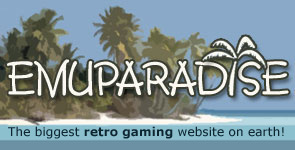Hertz rates this game: 5/5Mystic Heroes is the first 'musou' game I've played, (and one of the very first to appear on a Nintendo console), and turns out to be an excellent, indeed exceptional, introduction to the genre. Combining gripping gameplay mechanics with East Asian charm, it provides an experience that is well worth savouring.
The most significant and striking feature of Mystic Heroes is its cleverly crafted gameplay. The game uses a typical third-person view, with the Control Stick moving the character, the C-Stick moving the camera, the A-button for attack, and the B-button to jump, (in contrast to many Gamecube titles where the B-button is employed for striking foes.) The R-button is used for guarding, and in combination with the Control Stick, it enables one to dodge (an important move in this game, especially in boss battles). As one might suspect from its title, the game involves the use of numerous magical spells, which come in four main categories: direct spells (unleashed by pressing the Y button), targeting spells (activated by holding the Y button and moving the Control Stick to select targets before releasing Y), weapon spells (applied by pressing the X button) and jump spells (cast by pressing the X button in mid-air). This variety of spell types makes it possible for the player to develop his own particular style, (for example, I tend to use targeting and jump spells extensively; the former for long-range attacks, the latter when surrounded by foes). Last, but by no means least, one can charge up one's magic meter by pressing the R button and either the Y button or the X button: magic is also recharged by melee attacks. The list of moves may seem daunting, but with a little practice, one soon obtains a firm grasp of them.
Spells in Mystic Heroes are provided by runes. A character can equip two runes, each of which may contain a maximum of four spells (one for each type). Naturally, one can select spells from either rune, and a default spell is equipped if neither rune contains one of a particular type; some runes also raise a specific attribute, (such as health or defence). All runes and spells fall under the four elemental groups: Lightning, Wind, Fire and Ice, and each character specializes in one, enabling him or her to use mightier spells of that element than would otherwise be the case. Runes are scattered throughout the game; some are also provided as rewards for clearing stages and campaigns.
In Mystic Heroes, the heroes themselves do not gain experience: rather their spellcasting abilities improve as they are used in combat. Levelling up these abilities (the maximum is level four) enables one to equip more powerful spells of that type. For raising other attributes, the game takes a very different, innovative approach. As one fights legions of foes, certain items are dropped in the course of fighting, (the more foes defeated at a stroke, the greater the likelihood of this). These range from health and magic restoration supplies, to temporary boosts to attack, defence, etc.. to artifacts that permanently raise an attribute by a few points. This mechanism contributes greatly to the enjoyment of the game, since even in the direst straits, one can still hope to acquire a healing item if one keeps fighting. Items can also be obtained by destroying objects, so it is worthwhile to keep note of where jars and other such things are.
The game's visuals certainly do not disappoint. There's a wide variety of terrain, ranging from open plains to mountain passes, underground passages to urban pathways, and the level design encourages taking advantage of altitude and obstacles. The characters and enemies themselves are suitably distinct (one can easily distinguish between ordinary soldiers and formidable officers) as are the animations for the various spells. The cut-scenes are also well-made, as are the mini-maps.
The music in Mystic Heroes contributes substantially to the overall experience. While the first level's soundtrack recurs in many of the later stages, the third and sixth stage have their own specific musical scores that I found both apt and inspiring. The sound effects are more than adequate, but tend to be overshadowed by the voice acting, because in most battles, one will have one or more companions who will comment in the course of combat (as will one's own character). The voices not only do a good job of reflecting the personalities of the various heroes, but also provide useful indications regarding the state of the fighting. The FMVs in this game are fully-voiced as well.
The storyline is a fairly standard one, centred on the attempt of a defeated tyrant to reclaim his throne, though there is a twist towards the end. What is far from standard is the game's enormous replay value. In addition to three difficulty settings, the story mode has four distinct characters (two male - Tai and Shiga, and two female - Naja and Lani) and the early stages are different depending on who you play (I finished the campaign with both Tai and Shiga). Then there is the multi-player mode, (which can also serve as a single-player skirmish mode) with cooperative and competitive options. Last, but not least, there is also a survival mode for those seeking further challenges, (there is no saving in this mode, in contrast to the campaign where one can save between levels; each of the game's stages has at least three levels, except stage three which has two). Some runes can only be obtained through this mode.
To sum up, with its abundance of both quality and quantity, Mystic Heroes is an extremely gratifying game that honours the console it was first released on.




